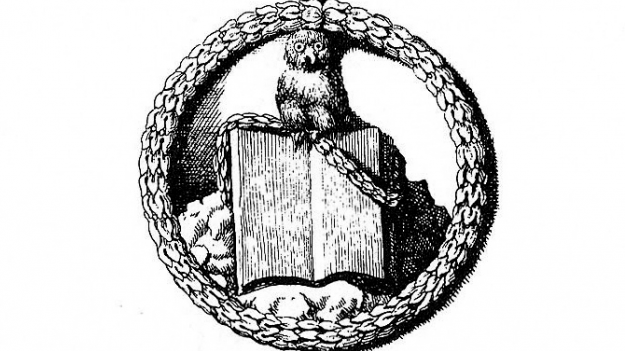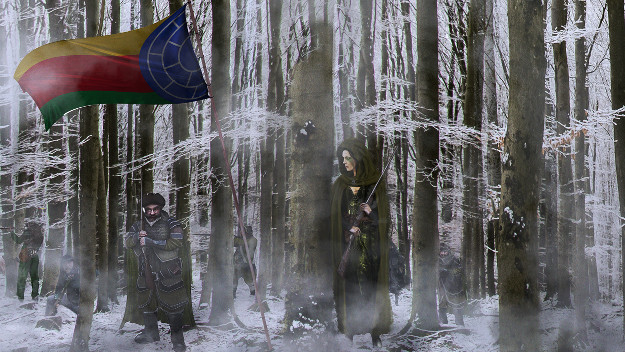
Like many of their more revolutionary cousins, the Illuminati used myths and symbols that closely matched their ideals. The Owl of Minerva is one such example, demonstrating their desire for reason and wisdom.
Edit (12/13/2019): It would be more accurate to say that Helisah, Aegras, and Fasti took a pledge. Fixed!
Crosspost: freeeaglestudios.com
Let’s face facts. You’ve probably heard of a wide variety of stories that portray secretive evil organizations. Almost all of them have a foundation in the conspiracy theories that have seeped into our culture. With that in mind, what if I told you that there is some historical truth to this madness that I used to create The Raiders?
It sounds far fetched, right? How could a force for good in the world of Maereath be taken from something that sounds so evil?
Well, it’s not as simple as you think.
The Fascinating True Story Of The Illuminati.
In the late 18th century, a wide variety of secret societies operated out of lodges on both sides of the Atlantic. You’ve probably heard of a few of them, but the most important one of all is the Freemasons. In those days, the society was a club where Enlightenment thinkers, kings, generals, and other notable folk could relax, do some work, and talk to each other without regard for religious or political issues.
However, some people didn’t agree with their ideas. Enter a young Bavarian professor by the name of Johann Adam Weishaupt.
Adam grew frustrated with the influence of Jesuit priests over the University of Ingolstadt, especially when they attempted to thwart the spread of the more liberal ideas of the period. He initially joined the Freemasons, but they were not quite open to many of his ideas. Therefore, he sought to create an organization that he called the Convent of Perfectibility, which was later changed to the Order of Illuminati in 1778.
Over its nine years of operation, the Illuminati expanded and clashed with other secret societies in the various German states of the time. Throughout that time, they championed many of the things that we take for granted like democracy, rationalism, secularism, and modernization.
There was just one problem.
The members couldn’t keep their mouths shut in public, so the order became an open secret. When Prince-elector Karl Theodor found out that the order had gained a bit of power in his part of the Holy Roman Empire, he banned all secret societies in his domain, seized what he could, and published it for all to see.
It Gets Worse.

We all know that Alex Jones is a lunatic, but did you know that some of his talking points are over 200 years old?
Unfortunately for our reasonably enlightened German friends, history can be a harsh mistress. Luckily for us, we know how their memory was corrupted and turned into the whack-a-doodle conspiracy theory (and evil organizations from pop culture) that we know today.
Near the turn of the 19th century, Augustin Barruel and John Robison developed the first pieces of the modern conspiracy theory by saying that the Illuminati were behind the French Revolution. They had absolutely no evidence to back up their claims, but that didn’t stop the fake news from making its way across Europe and the United States. The fear of such an organization didn’t do all that much in America, but it supposedly induced a sense of paranoia and fear in the European aristocracy. According to British historian J.M. Roberts, it got to the point where their panic and subsequent persecutions may have caused a number of democratic revolutions.
In the 20th century, the conspiracy was revived and expanded by fascists and fundamentalist Christians who objected to everything from modern liberalism to the kitchen sink. Their craziness inevitably gave us the internet weirdos that we know in the present day, but it also provided some of the creative inspiration behind organizations like SPECTRE, Abstergo Industries, and Hydra.
Putting It All Together.
With all of this in mind, The Raiders developed from a combination of the original ideals of the Illuminati and other pro-Enlightenment organizations, some pop culture tropes like the Rule of Cool, and a few modern sensibilities.
In Destruction and Illumination, Helisah, Aegras, and Fasti took a pledge to uphold the ideals of democracy, free choice, rationalism, and justice. These principles have been the core philosophy of the series ever since its inception, but I felt that I had to back them up with the Rule of Cool. Therefore, it seemed necessary to develop the peaceful and violent aspects of the organization into a balanced whole. Over time, this led to everything from the action sequences that you see in the books to the little background details like their desire to preserve old stories.
On the other hand, I felt that it was wise to steer clear of an utter reliance on secret organizations. The Illuminati advocated for modern ideals, but they also barred women or many other outsiders from their ranks. This strange contradiction compelled me to look for other sources of inspiration. Thankfully, I was able to draw on the appearance of female spies during the Enlightenment, the Victorian era, and the World Wars. After reading their stories, it was easy to put two and two together and pave the way for an elf like Helisah Almari.
What fun!
Another writing diary will be coming soon. Keep it here!


No Comments Yet